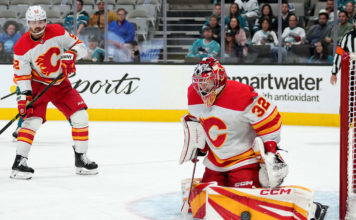I’m a frugal gardener. OK, I’m cheap. If I can buy a smaller
specimen (meaning cheaper), I’ll do so. And that’s why I love this
time of year in the garden so much. Many perennials need dividing
in the fall. The result? Free plants!
I’m a frugal gardener. OK, I’m cheap. If I can buy a smaller specimen (meaning cheaper), I’ll do so. And that’s why I love this time of year in the garden so much. Many perennials need dividing in the fall. The result? Free plants!
The fact of the matter is, perennials need dividing every three years or so. They not only need it, they’ll thrive as a result. If you grow clumping perennials, bulbs or plants with rhizomes or tubers, you need to divide them every three to five years to keep them healthy and vigorous.
Each year the typical perennial gains in girth by growing new roots and stems around the outer perimeter of the previous year’s growth. Eventually, these clumps get too big for their space in the garden and can’t take up enough nutrients. Also, growth can become weakened due to competition and crowding. The result will be fewer blooms or, in worst cases, no blooms at all. Best of all for cheap gardeners, dividing is an inexpensive way of increasing your supply of favorite perennials.
What plants need dividing? Things like iris, daylilies, chrysanthemums, ornamental grasses, lily of the valley, purple coneflowers, aster, dahlias, delphinium, bleeding heart (dicentra), fortnight lily (moraea), sunflower (helianthus,) and pulmonaria.
Above all, don’t be afraid to divide plants! Simply dig the candidate up out of the ground, trying to get as much of the rootball as possible. It helps to soak the area a couple days beforehand to make the soil as workable as possible. After digging out the plant, use a shovel, large knife or perennial spade to either half the plant or cut into quarters. You’ll find that some plants divide easily, such as bleeding heart, while others like Siberian iris, are very difficult. With the latter, I’ve actually gone in with a hack saw to do the job.
The success of any transplanted division depends on its root system. Some fall divisions fail because they don’t have sufficient roots to support their foliage. To avoid shortchanging plants of the roots they need to thrive, I try to dig as much of the root ball out as possible. It’s better to have more soil and roots than less. You can always shake off excess dirt, but you can’t paste severed roots back on.
Division size is a matter of personal taste and the size of your garden. In my garden, the optimal size of a division usually is about one-third the size of the original rootball. Pieces this large are big enough to reestablish themselves quickly, but small enough not to need division for another three years or so.
Plant divisions as soon as you can. Set them carefully into place and sprinkle soil around them until the planting hole is full. Do not tamp the dirt in with a shovel or your foot as this can break off rootlets. Water with a little slow-release fertilizer and you’re set. If you can’t plant right away, place divisions in a bucket or wheelbarrow and keep them damp, not wet. Placing a little damp newspaper around the roots will help.
Don’t have separation anxiety. Divide perennials to help them thrive.













